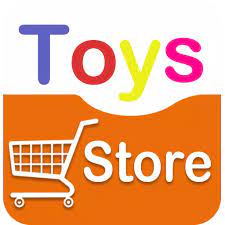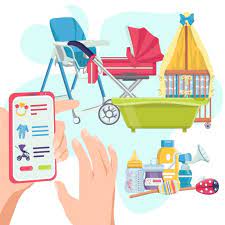
Buying toys in an online store can be a convenient way to find a wide selection of toys for children of different ages. Here are some tips to consider when purchasing toys online:
- Research and Identify Suitable Toys:
- Determine the age range, interests, and preferences of the child you’re buying the toy for.
- Consider educational value, developmental benefits, and safety aspects when selecting toys.
- Choose a Reputable Online Retailer:
- Look for established online toy stores with positive customer reviews and a good reputation.
- Ensure that the retailer has reliable shipping and return policies.
- Read Product Descriptions and Specifications:
- Pay close attention to the product descriptions and specifications provided by the online store.
- Look for details about the toy’s features, materials, dimensions, and any special functions it may have.
- Check Safety Labels and Certifications:
- Ensure that the toy has appropriate safety labels and certifications, such as ASTM, EN71, or CPSC.
- Look for indications that the toy has undergone safety testing and meets necessary standards.
- Look for Customer Reviews and Ratings:
- Read customer reviews and ratings to get insights into the toy’s quality, durability, and play value.
- Consider feedback from other customers who have purchased and used the toy.
By following these tips, you can make a well-informed decision when buying toys online. Always prioritize safety, quality, and the child’s interests to ensure a satisfying and enjoyable play experience.
Contents
Research and Identify Suitable Toys
When buying toys in an online store, it’s important to research and identify suitable toys that meet the child’s age, interests, and developmental needs. Here are some steps to help you with this process:
- Consider the Child’s Age and Developmental Stage:
- Take into account the age range of the child for whom you’re buying the toy.
- Consider the child’s developmental stage, including their motor skills, cognitive abilities, and interests.
- Look for Age Recommendations:
- Pay attention to the age recommendations provided by the online store for each toy.
- These recommendations are usually based on safety guidelines and the developmental appropriateness of the toy.
- Consider the Child’s Interests and Hobbies:
- Think about the child’s interests, hobbies, and favorite themes or characters.
- Look for toys that align with their interests, such as sports, art, animals, building, or pretend play.
- Prioritize Educational Value:
- Consider toys that provide educational benefits and promote learning.
- Look for toys that encourage problem-solving, creativity, critical thinking, fine motor skills, language development, or STEM concepts.
- Assess the Play Value:
- Evaluate the toy’s play value and versatility.
- Look for toys that can be played with in various ways or offer open-ended play opportunities.
By conducting thorough research and identifying suitable toys, you can ensure that the toys you choose are not only enjoyable for the child but also align with their age, developmental needs, and interests. Taking the time to make informed decisions will help you select toys that provide educational value, promote creativity, and foster a rewarding play experience.
Choose a Reputable Online Retailer
When buying toys in an online store, it’s crucial to choose a reputable online retailer to ensure a positive shopping experience and the authenticity of the products. Here are some guidelines to help you select a reputable online retailer:
- Research and Check Online Retailer’s Reputation:
- Look for well-known and established online retailers that specialize in toys or have a dedicated toy section.
- Read customer reviews, ratings, and testimonials about the retailer’s service, product quality, and reliability.
- Consider feedback from other shoppers to gauge their overall satisfaction with the retailer.
- Verify the Online Retailer’s Credentials:
- Check if the online retailer is a legitimate business by verifying their contact information, address, and customer support options.
- Look for trust indicators such as SSL encryption on their website to ensure secure transactions.
- Check if the retailer has a physical store or presence in addition to their online platform.
- Assess the Online Retailer’s Website:
- Visit the online retailer’s website and assess its professionalism, user-friendliness, and overall design.
- Look for clear product descriptions, high-quality images, and detailed information about shipping, returns, and customer support.
- Pay attention to any certifications or partnerships that the retailer may have, indicating their commitment to quality and customer satisfaction.
- Check for Secure Payment Options:
- Ensure that the online retailer provides secure payment options, such as encrypted checkout processes and trusted payment gateways.
- Look for familiar and reputable payment options like PayPal, credit cards, or other secure payment methods.
- Look for Clear Shipping and Return Policies:
- Review the online retailer’s shipping policy to understand the estimated delivery timeframes, shipping fees (if any), and international shipping options.
- Check their return and exchange policy, including information about return periods, condition of returned items, and refund procedures.
- Ensure that the retailer has a customer-friendly approach to returns and provides clear instructions for initiating returns or resolving any issues.
Remember, choosing a reputable online retailer is essential to ensure a smooth and trustworthy buying process when purchasing toys. Take the time to research, compare, and evaluate different online retailers before making your final decision.

Read Product Descriptions and Specifications
When buying toys in an online store, it’s important to read the product descriptions and specifications to make an informed purchasing decision. Here’s how you can effectively utilize this information:
- Understand the Toy’s Features and Functions:
- Read the product description to https://www.buydo.eu understand the toy’s key features, functionalities, and play value.
- Look for details on how the toy operates, any special features it may have, and how it can engage the child’s imagination and creativity.
- Assess the Age Appropriateness:
- Check the age range mentioned in the product description to ensure the toy is suitable for the child you’re buying it for.
- Consider the toy’s complexity, small parts, and any potential safety hazards that may not be suitable for younger children.
- Learn About the Materials Used:
- Look for information about the materials used in the toy’s construction.
- Consider factors such as durability, safety, and any potential allergens or sensitivities.
- Determine the Size and Dimensions:
- Pay attention to the toy’s size and dimensions mentioned in the product description.
- Consider whether the toy’s size aligns with your expectations and if it will fit in the intended play area or storage space.
- Look for Additional Accessories or Components:
- Check if the toy comes with any additional accessories, batteries, or required components.
- Determine if these items are included with the purchase or need to be purchased separately.
By carefully reading the product descriptions and specifications, you can gain a clearer understanding of the toy’s features, suitability, and overall quality. This information will help you make an informed decision and select a toy that aligns with your expectations and the child’s interests.
Check Safety Labels and Certifications
When buying toys in an online store, it’s crucial to check for safety labels and certifications to ensure the toys meet the necessary safety standards. Here’s how you can do that:
- Look for Age Recommendations and Warnings:
- Pay attention to the age recommendations provided by the manufacturer or online retailer.
- These recommendations indicate the appropriate age range for which the toy is designed and considered safe.
- Check for Safety Standards Compliance:
- Look for safety labels or certifications on the product description or packaging.
- Common safety standards for toys include ASTM F963 (USA), EN71 (Europe), and ISO 8124 (International).
- Verify Third-Party Certifications:
- Some toys may bear certifications from independent testing organizations or safety institutes.
- Examples include the Consumer Product Safety Commission (CPSC), UL (Underwriters Laboratories), or the Canadian Toy Testing Council.
- Pay Attention to Hazard Warnings:
- Check if the product description or packaging includes hazard warnings.
- These warnings may indicate potential choking hazards, small parts, or other safety concerns.
- Read Customer Reviews and Feedback:
- Consider reading customer reviews and feedback specifically related to safety.
- Look for any comments or concerns mentioned by other customers regarding the toy’s safety features or potential hazards.
By checking safety labels and certifications, you can make sure that the toys you purchase online adhere to recognized safety standards. Taking these precautions helps ensure the well-being of the children who will be playing with the toys and provides peace of mind for parents and caregivers.
Look for Customer Reviews and Ratings
When buying toys in an online store, checking customer reviews and ratings can provide valuable insights and help you make informed purchasing decisions. Here’s how you can effectively use customer reviews and ratings:
- Assess Overall Customer Satisfaction:
- Look for toys that have a high average rating or positive customer reviews.
- A higher rating generally indicates that previous customers were satisfied with the toy’s quality, functionality, and overall experience.
- Read Detailed Customer Reviews:
- Take the time to read individual customer reviews to get a better understanding of their experiences with the toy.
- Look for reviews that provide specific details, including the toy’s durability, playability, educational value, and any potential issues.
- Consider a Range of Opinions:
- Don’t rely solely on one or two reviews; instead, read multiple reviews to get a more balanced perspective.
- Consider both positive and negative reviews to gauge the toy’s strengths and weaknesses.
- Pay Attention to Verified Purchases:
- Some online retailers indicate if the reviewer is a verified purchaser.
- Verified reviews can be more reliable as they come from customers who have actually bought and used the toy.
- Look for Similar Preferences and Needs:
- Consider reviews from customers who have similar preferences or needs to yours.
- If you’re looking for a specific feature or functionality, look for reviews that specifically mention those aspects.
By checking customer reviews and ratings, you can gain valuable insights into the quality, performance, and overall satisfaction of the toys you’re considering. It helps you make a more informed decision and increases the likelihood of selecting a toy that meets your expectations and provides an enjoyable experience for the child.